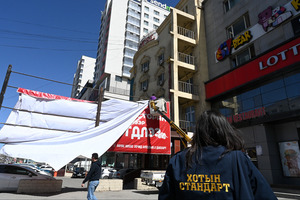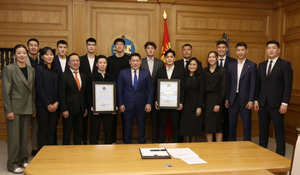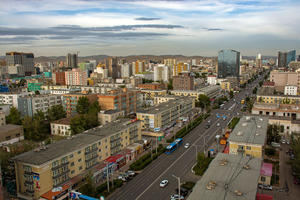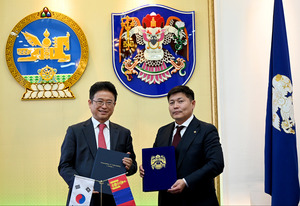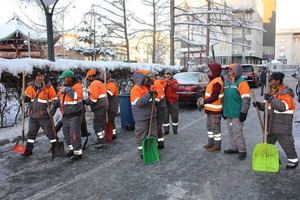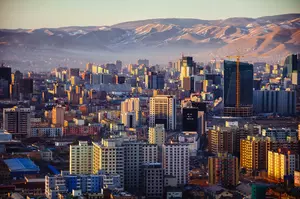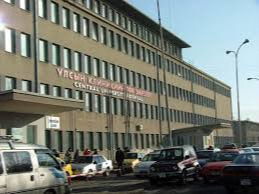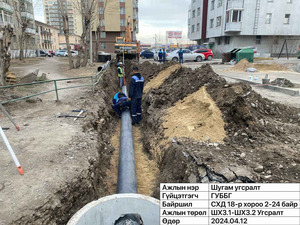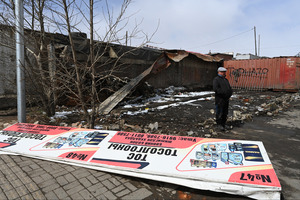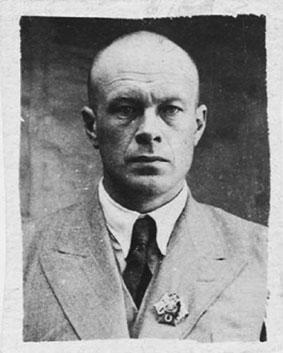 Andrei Dmitriyevich Simukov was born 111 years ago. Highly educated Simukov lived and worked for Mongolia but sadly was the victim of political purges. His daughter N.A.Simukov wrote about her father she lost when she was very young which was translated and prepared for publishing by S.Batbilig. We are delivering a part of S.Batbilig’s translation.
Andrei Dmitriyevich Simukov was born 111 years ago. Highly educated Simukov lived and worked for Mongolia but sadly was the victim of political purges. His daughter N.A.Simukov wrote about her father she lost when she was very young which was translated and prepared for publishing by S.Batbilig. We are delivering a part of S.Batbilig’s translation.
Andrei Dmitriyevich Simukov was born in Petersburg on April 29, 1902. His father, Dmitri Andreyevich Simukov /1862-1922/ was from rural village in Belarus who graduated from History and Language Faculty of the University of Petersburg and worked for the Ministry of Finance. His mother Natalia Yakovlevna Simukov was born to the family of a physician in Petersburg and worked as a language teacher at the higher Course for Women named for Bestujev. Simukov family had three children and Andrei was the eldest.
One of the indications of hard work and active efforts of Andrei was that at the age of 12-13 he has learnt all collective techniques and methods of simple plane-table mapping, drying plants and studying insects and was familiar with all birds in the vicinity of Petrograd. In order to strengthen his mind and body he was playing sports and was a member of boy scouts. In summer of 1917 he travelled to Ukraine with fellow scouts on field trip.
Andrei Dmitriyevich wrote about his life afterwards as “Direction of my life and work had changed due to various causes” which referred to the October Revolution in Russia, followed by Civil War, starvation and poverty. The Simukov also faced the poverty like many other families at that time. His father lost his job and the family lived on with small savings of his mother. 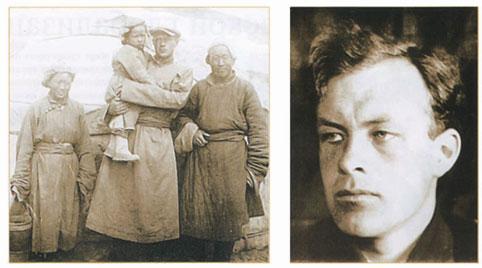
In early spring of 1923 Andrei Simukov’s life totally changed when he read an advertisement in the newspaper about the lecture by P.K.Kozlov and found out that the well-known traveler was going on a field exploration of Mongolia-Tibet. Andrei without doubt attended the lecture and applied as they needed staff. Only three people were selected from hundreds of applicant which included Andrei Simukov. He started working in and for Mongolia which he described “First on September 26, 1923, I stepped over the border of Mongolia as a member of the exploration group of the Russian geographic association led by P.K.Kozlov funded by the People’s Commissariat of the USSR”. Simukov was a 2nd year student at the Technical Institute at the age of 21. 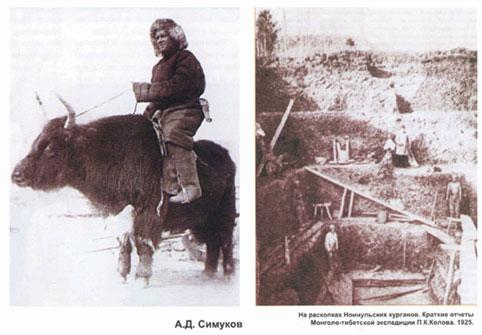
In February 1926, Simukov had a short visit to Moscow and married Alekseyenko Milya, a student of Chemistry Faculty of the University of Moscow. The same month he was back to his field work. When the field work was completed in autumn of 1926 Andrei Dmitriyevich Simukov was invited to work at the textbook institute by its secretary Tseveenii Jamsran. In one of his letters to his mother, Andrei wrote: “I knew if I ever come to Mongolia it would be a while till I go back and I knew I would not even think about going back”. Starting from January 24, 1927, Andrei Simukov was assigned as the head of museum and cartographic unit of the institute. According to an assignment, he opened the Bogd Palace Museum in summer of 1927. In 1927-1939 he was a part of 15 large field research groups and a leader and member of many trips. He travelled 70 thousand km throughout the territory of Mongolia. He compiled summaries and results of field research works of until 1936 in two large volumes. 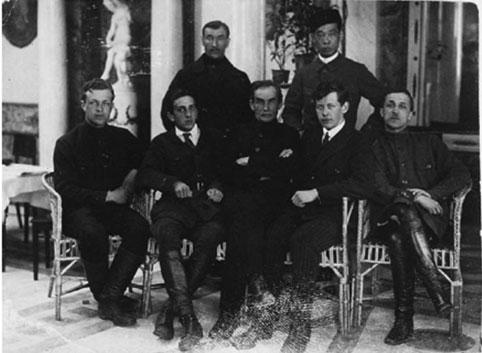
A.D.Simukov was the first person to conduct physical and geographic research of Mongolia, specifically Khangai and Govi regions, reflected several mountains and mountain ranges (Mongolian Tianshan mountain margins) on the map, identified main natural regions of Mongolia, their horizontal and vertical variations, basic flora and fauna of regions and prepared maps of distribution of most common plants and mammals. A.D.Simukov was the first to propose the physical-geographic regionalization. He was of the view that geographical landscape is the place of activities of people thus ways to use its elements in economy of the country must be sought. Thus, in 1930s he started focusing on economic geography matters. At this time, A.D.Simukov determined the pastureland of Mongolia for the first time with scientific justifications and linked its yields with geographic locations. A.D.Simukov was the first to categorize nomadic lifestyle in the Mongolian Khangai and Govi areas and conducted an analysis on methods of taking care of livestock. This enormous volume of work was completed as a result of his efforts, hard-work and co-workers as well as support from local residents who obviously had great respect to his endeavors. As he learnt the language well, was peaceful in nature and showed respect to local Mongolians, he was well received in any part of the country. The most importantly, Simukov lived among the Mongolians, sincerely loved Mongolia, closely felt the goods and bads in lives of its residents and dedicated his life for their well-being. It is said that anywhere he went he was warmly greeted and invited to feasts. His home in Ulaanbaatar city always had guests from rural areas, and he was called “Yellow tall Damdinsuren”. Andrei named his son born in spring 1928 Altai and wanted to name his daughter Govi, but his wife wanted to name her as respect to the memory of his mother and they named her Natalia. In 1934 Simukov released Geographical Atlas of the People’s Republic of Mongolia in Russian and Mongolian languages which included 18 maps and cartograms. The atlas reflected natural characteristics of Mongolia, administrative structure, ethnical geographic map, population density per province and domestic animal husbandry characteristics per type of livestock. This atlas is the first of this type in the history of Mongolian studies. The same year, A.D.Simukov has compiled the “Geographic composition of the People’s Republic of Mongolia” that contained full set of information on the nature, population and living of Mongolia and summarized then into two textbooks in Mongolian language. On the occasion of the 15th anniversary of the People’s Revolution in 1936 a group of employees of the Science Institute were awarded by the Government of the People’s Republic of Mongolia among which was A.D.Simukov whose labor and endeavors were highly recognized and who was awarded with the State Gold Polar Star Order. The same year, i.e. A.D.Simukov’s 10th year of service for the institute as he said, he prepared majority of his research works and books he worked on for many years in Mongolia for publishing and made them ready for submission to the Science Institute of Mongolia and authorized representatives of the USSR.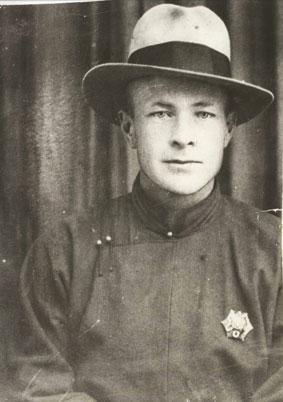 On September 19, 1039, at the age of 37, A.D.Simukov was arrested in Ulaanbaatar city by the People’s Commissariat of Home Affairs of the USSR, and it was said that “he was accused on the grounds of Article 58-1.a of the Criminal Law of the USSR, i.e. joined the foreign secret service organization” but “he did not accept his case and there was no direct proof of his guilt”. On April 22, 1940, he was transferred from Ulaanbaatar to Ulan-Ude prison escorted by special guarding. In early February 1941, A.D.Simukov was transferred to the Pechor confinement unit of Komi ASSR through Novosibirsk and Archangelsk and according to official documents, he died of heart disorder on April 15, 1942. However, it is proven with the facts that on April 24, 1941, at the age of 39, my father was definitely alive. In a letter my father wrote to us from Archangelsk dated on this day he mentioned “we are going to the north east…” which was one of the last things he wrote. Since then, only in two months, the Great Civil war started. In December 1956 A.D.Simukov was fully exonerated based on the ground “lack of case composition”.
On September 19, 1039, at the age of 37, A.D.Simukov was arrested in Ulaanbaatar city by the People’s Commissariat of Home Affairs of the USSR, and it was said that “he was accused on the grounds of Article 58-1.a of the Criminal Law of the USSR, i.e. joined the foreign secret service organization” but “he did not accept his case and there was no direct proof of his guilt”. On April 22, 1940, he was transferred from Ulaanbaatar to Ulan-Ude prison escorted by special guarding. In early February 1941, A.D.Simukov was transferred to the Pechor confinement unit of Komi ASSR through Novosibirsk and Archangelsk and according to official documents, he died of heart disorder on April 15, 1942. However, it is proven with the facts that on April 24, 1941, at the age of 39, my father was definitely alive. In a letter my father wrote to us from Archangelsk dated on this day he mentioned “we are going to the north east…” which was one of the last things he wrote. Since then, only in two months, the Great Civil war started. In December 1956 A.D.Simukov was fully exonerated based on the ground “lack of case composition”.
Out of A.D.Simukov’s numerous products he completed while working for many years in Mongolia, “Geographic Atlas of the People’s Republic of Mongolia” was published in Ulaanbaatar in 1934, “General Map of the People’s Republic of Mongolia” well known as the “Simukov’s Green” in Ulaanbaatar in 1937, and about 30 research articles in magazines such as “Mongolian Living”, “Modern Mongolia”, “New Mirror” and “Mongolian National Cultural Way”. 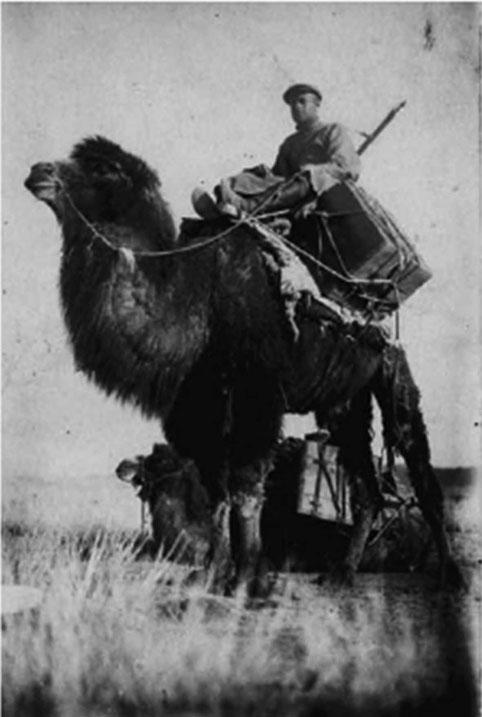
Some works that he was preparing for publication have not been found in the archives including “Geographical study of the Govi of the People’s Republic of Mongolia”, Geography of the central Khangai”, Part 2, Summarized Geography of the People’s Republic of Mongolia”, “Daily notes of the research made during the trip to the Govi in 1927”, “Mongolian land mapping”, “Notes on impacts of geography on population and livestock density”, “Argali study”, “Monasteries of the People’s Republic of Mongolia”, Agricultural Map of the People’s republic of Mongolia” and “Western Govi Map”. Also, daily notes on field research of 1936, 1937, 1938, “Economic atlas” that was made 75% complete by 1937, geographical terms and definitions and geographical encyclopedia have never been found.
